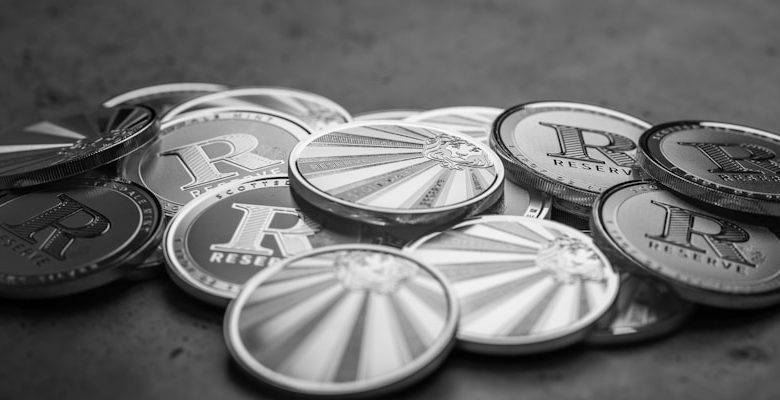The Role of NFTs in Decentralized Finance and Beyond

- Understanding the basics of NFTs and decentralized finance
- Exploring the intersection of NFTs and DeFi
- The potential for NFTs to revolutionize the financial industry
- Challenges and opportunities in integrating NFTs with decentralized finance
- NFTs as a new asset class in the world of decentralized finance
- The future implications of NFTs for the broader financial ecosystem
Understanding the basics of NFTs and decentralized finance
NFTs, or Non-Fungible Tokens, have become increasingly popular in the world of decentralized finance. These unique digital assets represent ownership of a particular item or piece of content, often in the form of art, collectibles, or virtual real estate. NFTs are built on blockchain technology, which ensures their authenticity and scarcity.
Decentralized finance, or DeFi, on the other hand, refers to a new financial system that operates without traditional intermediaries such as banks or brokerages. Instead, DeFi relies on smart contracts and blockchain technology to facilitate transactions and provide financial services.
The intersection of NFTs and DeFi opens up a world of possibilities for creators and investors alike. NFTs can be used as collateral for loans, traded on decentralized exchanges, or even used to earn passive income through staking or liquidity mining. This fusion of digital ownership and decentralized finance is revolutionizing the way we think about value and assets in the digital age.
By understanding the basics of NFTs and decentralized finance, individuals can take advantage of this emerging trend to diversify their investment portfolios and participate in new forms of economic activity. Whether you are an artist looking to monetize your work, a collector seeking to invest in rare digital assets, or simply curious about the future of finance, NFTs and DeFi offer a unique opportunity to explore the possibilities of the digital economy.
Exploring the intersection of NFTs and DeFi
NFTs and DeFi have been two of the hottest trends in the cryptocurrency space in recent years. The intersection of NFTs and DeFi has opened up a world of possibilities, allowing users to leverage the unique properties of non-fungible tokens within decentralized finance ecosystems.
One of the key ways in which NFTs are being integrated into DeFi is through collateralization. By using NFTs as collateral, users can access liquidity without having to sell their valuable digital assets. This opens up new avenues for borrowing, lending, and trading within the DeFi space.
Another exciting development is the emergence of NFT-backed loans. Users can now use their non-fungible tokens as collateral to secure loans, creating a new form of decentralized lending. This allows individuals to unlock the value of their NFTs without having to part ways with them permanently.
Furthermore, NFTs are also being used to create new forms of financial products within the DeFi ecosystem. Fractionalized ownership of NFTs allows users to invest in high-value assets without having to purchase them outright. This opens up investment opportunities to a wider range of individuals, democratizing access to unique and valuable digital assets.
The intersection of NFTs and DeFi represents a new frontier in the world of decentralized finance, offering innovative solutions to traditional financial problems. As these technologies continue to evolve and mature, we can expect to see even more exciting developments at the crossroads of non-fungible tokens and decentralized finance.
The potential for NFTs to revolutionize the financial industry
NFTs have the potential to disrupt the financial industry by introducing new opportunities for investors, creators, and collectors. These digital assets represent ownership of unique items, such as art, music, and virtual real estate, through blockchain technology. This innovation opens up a world of possibilities for decentralized finance, enabling individuals to buy, sell, and trade assets without the need for intermediaries.
The introduction of NFTs has created a more inclusive financial ecosystem, allowing for greater participation from a wider range of individuals. By leveraging blockchain technology, NFTs provide transparency, security, and immutability, ensuring the authenticity and provenance of digital assets. This level of trust has the potential to revolutionize the way financial transactions are conducted, leading to more efficient and secure processes.
Furthermore, NFTs can be used to tokenize real-world assets, such as real estate, stocks, and commodities, making them more accessible and liquid. This tokenization process allows for fractional ownership, enabling investors to diversify their portfolios and mitigate risk. Additionally, NFTs can be programmed with smart contracts, automating processes and reducing the need for manual intervention.
Overall, the integration of NFTs into the financial industry has the potential to democratize access to assets, increase transparency, and streamline processes. As the technology continues to evolve, it is important for stakeholders to stay informed and adapt to the changing landscape of decentralized finance. By embracing NFTs, the financial industry can unlock new opportunities for growth and innovation.
Challenges and opportunities in integrating NFTs with decentralized finance
Integrating Non-Fungible Tokens (NFTs) with decentralized finance (DeFi) presents both challenges and opportunities for the blockchain industry. NFTs have gained significant popularity in recent years for their unique digital assets, while DeFi has revolutionized traditional financial systems by providing decentralized alternatives.
One of the main challenges in integrating NFTs with DeFi is the lack of interoperability between different platforms. NFTs are typically built on specific blockchains, making it difficult to use them across various DeFi protocols. This fragmentation hinders the seamless integration of NFTs into DeFi ecosystems, limiting their utility and potential for growth.
Another challenge is the scalability of NFT transactions on DeFi platforms. As NFTs are unique and indivisible assets, their transactions often require more computational resources and network bandwidth compared to fungible tokens. This scalability issue can lead to higher fees and slower transaction times, posing a barrier to widespread adoption.
Despite these challenges, integrating NFTs with DeFi also offers significant opportunities for innovation and growth. By bridging the gap between digital art, collectibles, and decentralized finance, NFTs can unlock new possibilities for creators, investors, and users alike.
For example, NFTs can be used as collateral in DeFi lending protocols, allowing users to borrow against their digital assets without the need for traditional financial intermediaries. This opens up new avenues for liquidity mining, yield farming, and other DeFi strategies that leverage the unique properties of NFTs.
Furthermore, the integration of NFTs with DeFi can enhance the transparency and security of digital asset ownership. By tokenizing real-world assets as NFTs and trading them on decentralized exchanges, users can benefit from immutable ownership records and automated smart contract enforcement.
NFTs as a new asset class in the world of decentralized finance
NFTs have emerged as a novel form of digital asset that is gaining popularity in the realm of decentralized finance (DeFi). These unique tokens represent ownership of a particular item or piece of content on the blockchain, making them highly valuable in the digital world. NFTs have opened up a new avenue for investors to diversify their portfolios and explore alternative investment opportunities beyond traditional assets such as stocks and bonds.
As a new asset class, NFTs bring a level of uniqueness and scarcity that is unprecedented in the world of finance. This scarcity is what drives the value of NFTs, making them highly sought after by collectors and investors alike. In the decentralized finance space, NFTs are being used as collateral for loans, providing a new way for individuals to access liquidity without having to sell their prized digital assets.
Furthermore, NFTs have the potential to revolutionize the way we think about ownership and value in the digital age. By tokenizing real-world assets such as art, music, and even real estate, NFTs can democratize access to these assets and make them more liquid. This has the potential to disrupt traditional financial systems and create new opportunities for individuals to participate in the global economy.
The future implications of NFTs for the broader financial ecosystem
NFTs have the potential to revolutionize the broader financial ecosystem by introducing new ways of transferring, owning, and trading digital assets. As these non-fungible tokens gain popularity, they are expected to have far-reaching implications for various sectors beyond just art and collectibles.
One of the key impacts of NFTs on the financial ecosystem is their potential to democratize access to investments. By allowing fractional ownership of high-value assets, NFTs can enable a wider range of investors to participate in markets that were previously out of reach. This could lead to increased liquidity and diversity in investment portfolios, ultimately benefiting the overall financial landscape.
Furthermore, NFTs have the ability to streamline processes in the financial industry, such as digitizing contracts and reducing the need for intermediaries. This could result in cost savings and increased efficiency, making transactions faster and more secure. Additionally, NFTs can also provide transparency and immutability through blockchain technology, reducing the risk of fraud and errors in financial transactions.
As NFTs continue to evolve and gain acceptance in the mainstream, they are likely to open up new opportunities for innovation in decentralized finance (DeFi). By leveraging smart contracts and blockchain technology, NFTs can be integrated into DeFi platforms to create new financial products and services. This could lead to the development of decentralized lending, borrowing, and trading solutions that are more accessible and efficient than traditional financial systems.
Overall, the future implications of NFTs for the broader financial ecosystem are vast and promising. As these digital assets continue to disrupt traditional markets and pave the way for new financial models, it will be crucial for stakeholders to adapt and embrace the changes brought about by this innovative technology.



